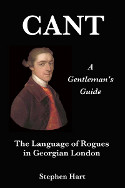THE JUNIOR UNITED SERVICE CLUB
At the corner of Charles-street and Regent-street, was erected in 1855-57, Nelson and James, architects, and has a most embellished exterior, enriched with characteristic sculpture by John Thomas. The design is described in the Builder as in the Italian style of architecture, the bay-window in Regent-street forming a prominent feature in the composition, above which is a sculptured group allegorical of the Army and Navy. The whole of the sculpture and ornamental details throughout the building are characteristic of the profession of the members of the Club. The exterior of the building is surmounted by a richly-sculptured cornice, with modillion and dentils, and beneath it an elaborate frieze, having medallions with trophies and other suitable emblems, separated from each other by the rose, shamrock, and thistle. The external walls of the building are of Bath stone, and the balustrade round the area is of Portland stone; and upon the angle-pieces of this are bronze lamps, supported by figures. The staircase is lighted from the top by a handsome lantern, filled with painted glass, with an elaborate coved and ornamented ceiling around. On the landing of the half space are two pairs of caryatidal figures, and single figures against the walls, supporting three semicircular arches, and the whole is reflected by looking-glasses on the landing. On the upper landing of the staircase, is the celebrated picture, by Allan, of the Battle of Waterloo. Upon the first floor fronting Regent-street, and over the morning-room, and of the same dimensions, is the evening-room, which is also used as a picture-gallery, 24 feet high, with a bay-window fronting Regent-street. In the gallery are portraits of military and naval commanders; Queen Victoria and Prince Albert, and the Emperor Napoleon; and an allegorical group in silver, presented to the Club by his Imperial Majesty.
John Timbs
Club Life of London Vol. I
London, 1866

